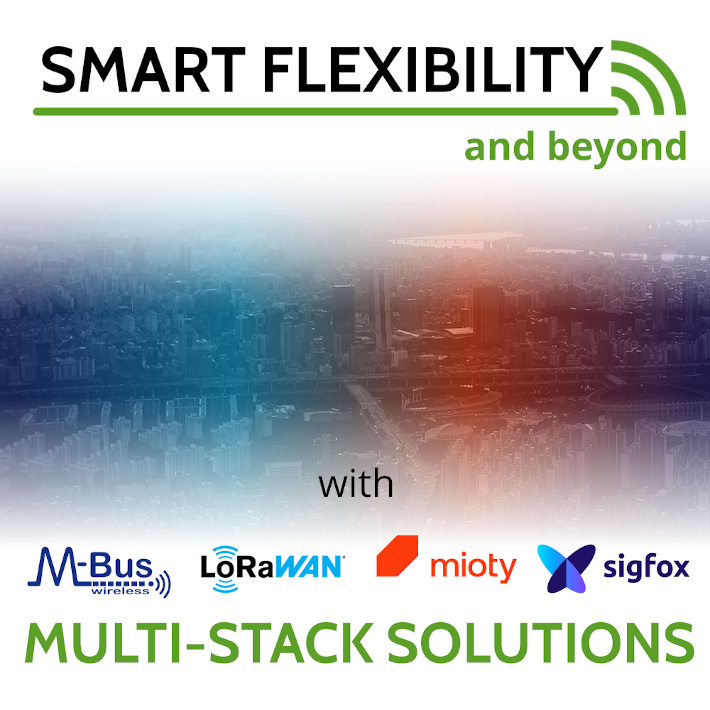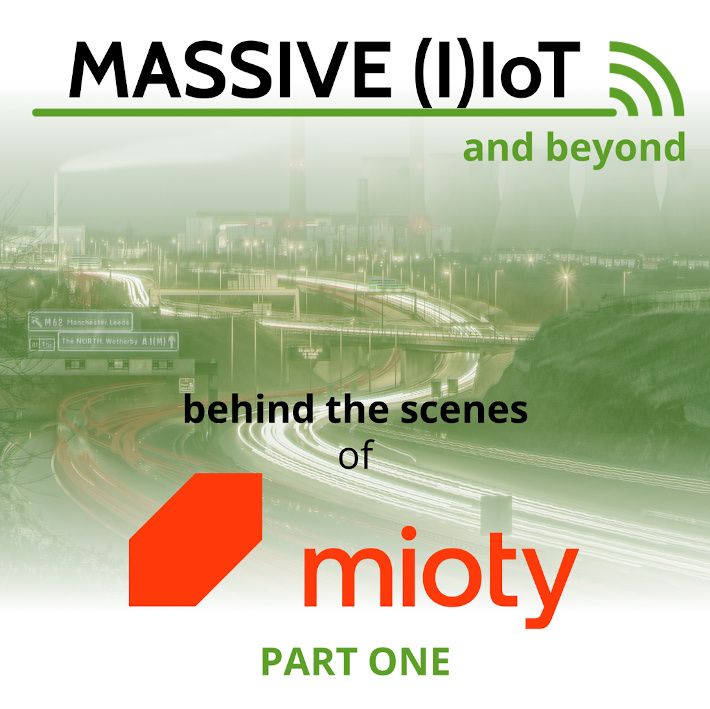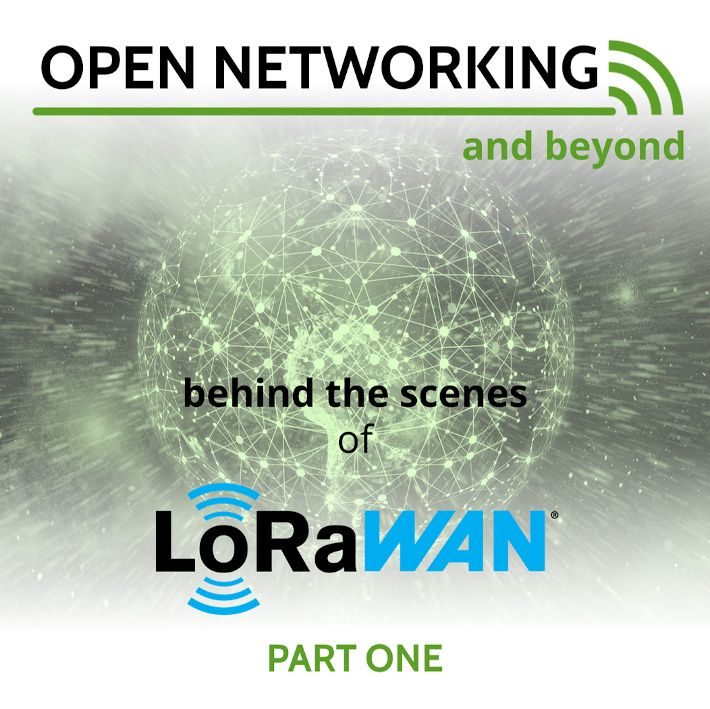Multi-Stacks: maximum flexibility
Flexibility and quick reaction are key elements for modern and efficient IoT networks. With our Multi-Stacks, we provide an innovative solution for combining several communication technologies for wireless data transmission in just one stack. Switch between Wireless M-Bus and / or LPWAN technologies like mioty®, LoRaWAN® and Sigfox during runtime.
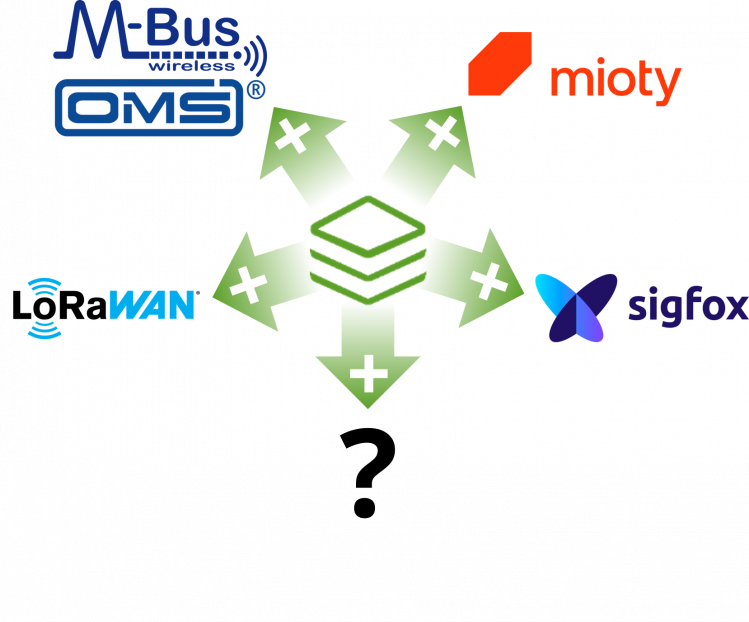
INTELLIGENT MULTI-STACK API
Provides a constant "look-at-feel" and allows simultaneous operation of multiple protocols on one MCU, as well as seamless switching between stacks to ensure maximum flexibility for the user at all times.
MORE NETWORK COVERAGE
Not every wireless network is available at every deployment site. With the multi-stack, it is easy to choose between multiple radio networks. Thus, the overall network coverage is increased.
STRONG FEATURES
The advantages of different technologies are added, e.g. remote reading of devices using the widely used wM-Bus protocol and forwarding of data with significantly more range using LPWAN technology.
EFFICIENT INTEGRATION
If data is to be sent over several radio technologies in a network, this can be implemented by using different controllers - or, with fewer resources, in just one multi-stack.
Get in touch
Available multi stacks

OMS® v4.5.1 + OMS® over LoRaWAN®
With this dual stack for end nodes, you enable your customers to have interoperable devices with the latest OMS® v4 and TR06 specified communication for numerous use cases.

OMS® v4.5.1 + LoRaWAN® v1.0.4
This powerful dual stack stands for further standardization within smart metering applications and an easy entry into IoT connectivity. It also enables a smooth transition phase when switching from OMS®/wM-Bus to LoRaWAN®.

OMS® v4.5.1 + LoRaWAN® v1.0.4
+ OMS® over LoRaWAN®
Flexibility at the highest level - the triple stack for endpoints combines three individual stacks in a comprehensive software solution for various use cases.
Stack Features
Command Line Interface (CLI)
enables a quick start to easily start sending and receiving telegrams using the well-proven STACKFORCE API Transport Protocol (SATP)
porting and customization
of the Multi-Stack possible to any suitable hardware and needs
secure serial communication
by enabling encryption for all serial frames
Software Library
- Flexible API and interface for externalization of security functions
- Well-formed Hardware Abstraction Layer (HAL)
- Unified look-and-feel of API for all protocol stacks
Modem Software
- All API functions available via well-proven serial interface with minimum overhead
- Support for several serial interfaces, like UART (default), SPI, I²C, ...
- For sensitive applications: AES encryption for serial interface
Support of hardware acceleration
If provided by the platform, the stack supports use of hardware acceleration, like:
- AES de- / encryption
- CRC-16
- De- / encoding of Manchester, 3 out of 6, ...
Support of any type of non-volatile memory
- EEPROM, Flash, MRAM, ...
- internal / external (e.g. connected via SPI)
Advantages of Multi-Stacks
CONVENIENT CHANGE
FROM SINGLE TO MULTI-STACK
When switching from a STACKFORCE single stack to a multi-stack, only minor adjustments are necessary. The single-stack library is replaced by the multi-stack library and the application is extended to control the newly added stack. Only the new stack has to be configured according to the own needs.
SIMPLE DEVICE OPTIMIZATION
By using multiple protocols within a multi-stack, slightly more memory is required on the chip overall. The flexibility of the STACKFORCE API offers the possibility that a (temporarily) unused stack of a multi-stack can be easily removed from the chip and thus the device can be optimized.
USER DEFINED SWITCHING
The multi-stacks are delivered with predefined parameters, but it is up to the user which strategy of switching between the stacks is used. For each possible state of a system, a user-defined protocol priority can be set, a stack can be managed, and latency can be minimized.
ONE DEVICE - MULTIPLE USE CASES
By seamlessly switching between technologies during operation, multiple use cases can be served with just one device. One example is combined operation - stationary and mobile. At the enterprise site, state data is transmitted via the company's own mioty®/LoRaWAN® network, and in mobile operation, the public Sigfox network can be accessed to transmit the location.
Multi-Stacks architecture
The heart of our Multi-Stacks is the STACKFORCE Multi-Stack API, which enables the control of an optional number of stacks and switching between those during runtime. The Multi-Stacks can be operated inside (library version) or as (modem version) an embedded firmware for operation at a microcontroller or system-on-chip. The library version (object code) includes an example application and an example project for IDE and can be used in conjunction with an embedded operation system (OS) dedicated for microcontrollers, while the modem version (firmware / binary) includes a serial interface and power management. Both versions come with the Multi-Stack and can be used.
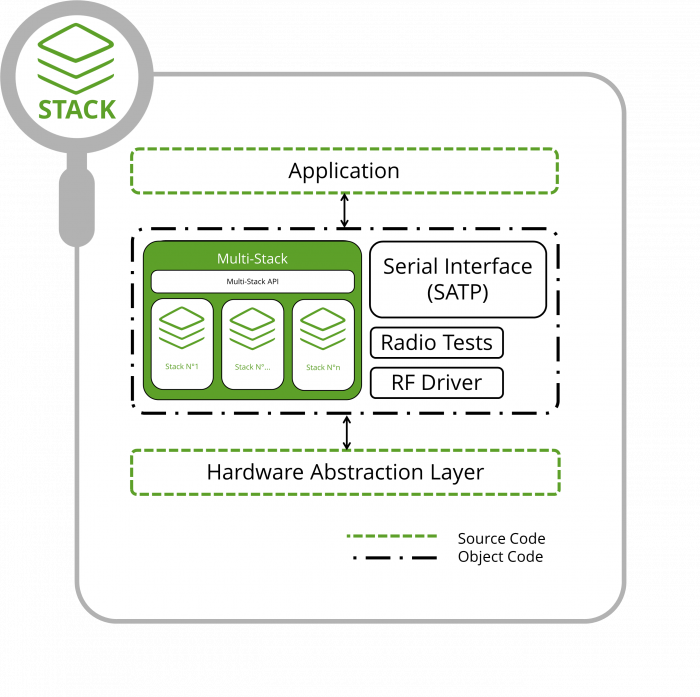
Standard or customized?
We provide an increasing number of standard Multi-Stacks for the most common platforms. Nevertheless, we do not lose sight of your personal requirements. Our developers work with you at all times to customize Multi-Stacks according to your needs. Whether you need a special combination of two or more technologies or you want to use a platform not supported by our stacks so far, just tell us. We will find the perfect solution for your IoT project!
Standard Multi-Stacks
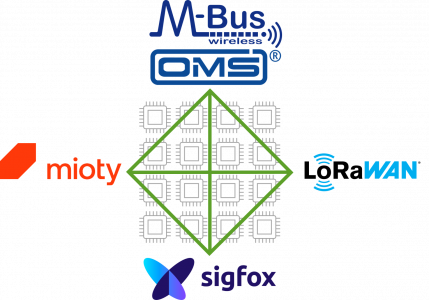
Our standard Multi-Stacks score with direct availability, well-established and proven source codes and easy integration. The most popular combinations our "big four", Wireless M-Bus, mioty®, LoRaWAN® and Sigfox, are already available as dual- or triple-stacks for the most common platforms.
Custom Multi-Stacks

Combine modern wireless communication technologies in just one stack for a certain platform* as required: We will do it for you! You can simply pick between our "big four", wireless M-Bus, mioty®, LoRaWAN® and Sigfox, or any other radio technology supported by us.
*if supported by hardware
Commercial Features
First Level Support

High Quality Product

EASY COMISSIONING & CONFIGURATION

WARRANTY & MAINTENANCE

Connect your product with a multi-stack
STACKFORCE Single Stacks

The LoRaWAN® v 1.0.4 Protocol Stack is a further development of the Open Source LoRaWAN® Stack. It is designed for high-performance industrial use in complex environments with high security requierements and at maximum performance.

The mioty® Protocol Stack is an extremly efficient and particularly robust and scalable solution for modern IoT connectivity. It implements the innovative technology of telegram splitting, setting new standards in the field of wireless data transmission.

The OMS v.4.5.1 for End Devices is compliant to the wM-Bus / OMS standard and additionally has professional support. It is optimized towards a compromise of small footprint, excellent modularity and scalability, combined with high functionality.

The Wired M-Bus Protocol Stack complements the Wireless M-Bus offering with a high-performance, wired solution. The stack implements all protocol elements required for M-Bus compliance and is extremely robust in operation.


